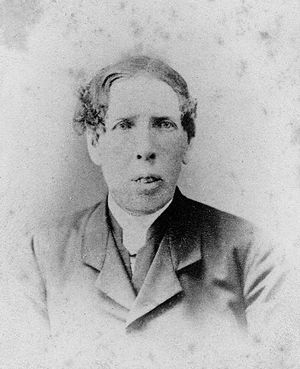James Graves (antiquarian) facts for kids
Quick facts for kids
James Graves
|
|
|---|---|
 |
|
| Born | 1815 Kilkenny, Ireland
|
| Died | 1886 |
| Education | Trinity College, Dublin |
| Known for | clergyman, antiquary and archaeologist |
| Parent(s) | Richard Graves |
James Graves (1815 – 1886) was an important Irish clergyman, historian, and archaeologist during the Victorian era. He is best known for his dedication to finding and protecting old buildings and historical items in Ireland. His work helped save many valuable parts of Ireland's past for future generations.
Contents
Who Was James Graves?
James Graves was born in Kilkenny, Ireland, in 1815. His father, Richard Graves, was also a priest and ran a school in the city. James was born on October 11th, a day celebrated for St Canice, the patron saint of Kilkenny.
Early Life and Education
In 1834, James Graves began studying at Trinity College, Dublin. He worked hard and earned his Bachelor of Arts (BA) degree in 1839. After college, he became a priest, serving in different churches. He eventually became the Treasurer of St Canice's Cathedral in Kilkenny.
A Passion for History
While James Graves was a clergyman, his real passion was for history and archaeology. He loved studying old things and places. He became good friends with other famous historians like John O'Donovan and George Petrie. Like them, James wanted to make sure Ireland's ancient treasures were kept safe.
Focus on Medieval Ireland
James Graves was especially interested in the architecture of his own city and county, Kilkenny. He focused on Irish history from about 1169 onwards, which includes the medieval period. This was a time when many castles, churches, and other important buildings were constructed.
Protecting St Canice's Cathedral
One of his most important projects was the careful conservation work on St Canice's Cathedral in Kilkenny city. While he was the Treasurer, he made sure the cathedral was looked after and preserved. This helped keep the historic building in good condition.
Saving Ancient Churches
In the 1860s and 1870s, James Graves worked with the Royal Society of Antiquaries of Ireland. He was one of the people who helped start this group. Through this society, he worked to protect several important ruined medieval churches. His efforts helped save these historical sites from being lost forever.
Legacy and Importance
Even though James Graves might not be as famous as some other early Irish archaeologists like George Petrie, his work was very important. He played a huge role in saving many medieval Irish buildings.
Gaining Support for Preservation
Because he was a respected clergyman, James Graves was able to get the attention of important people in power. This was very helpful, especially after the Church of Ireland was disestablished. Many old church sites were left without clear ownership. Thanks to people like James Graves, these sites were eventually taken care of by the state and became National Monuments. This means they are now protected by the government for everyone to enjoy and learn from.

